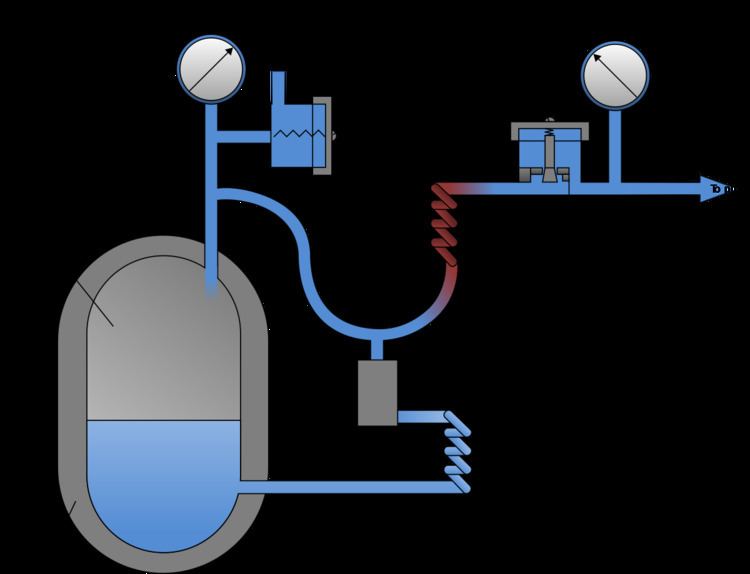 | ||
A vacuum insulated evaporator (VIE) is a form of pressure vessel that allows the bulk storage of cryogenic liquids including oxygen, nitrogen and argon for industrial processes and medical applications.
The purpose of the vacuum insulation is to prevent heat transfer between the inner shell, which holds the liquid, and surrounding atmosphere. Without functioning insulation, the stored liquid will rapidly warm and undergo a phase transition to gas, increasing significantly in volume and potentially causing a catastrophic failure to the vessel due to an increase in pressure. To combat such an event, VIEs are installed with a pressure safety valve.
To remain a liquid, the vessel contents must be kept at or below its critical temperature. The critical temperature of oxygen is −118 °C; above this temperature, applying more pressure will not result in a liquid, but rather a supercritical fluid.
Mandatory safety features
To avoid explosions or other dangerous events, the VIE must be kept in an open space with no overhead wires (to prevent sparks from igniting surrounding materials, which will combust easier in the prescense of liquid oxygen) and ringed by a fence of non-combustible material. Parking vehicles, open flames, smoking, and other potentially hazardous activities are normally prohibited anywhere near the VIE.
